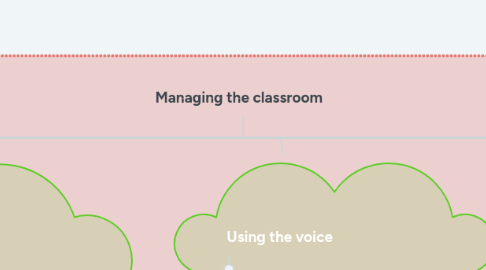
1. Classroom Management
1.1. How the classroom space is organized.
1.1.1. The way we talk to students.
1.1.1.1. Classroom management also involves being able to deal with difficult situations.
2. The teacher in the classroom
2.1. The way we move and stand.
2.1.1. The way we are able to respond to what happens in class.
3. Proximity
3.1. Teachers need to consider how close they should be to the students they are working with.
3.1.1. Students are uncomfortable if their teacher stands or sits close to them.
4. Apropriacy
4.1. Deciding how close to the students you should be when you work with them is a matter of appropriacy.
4.1.1. Is the general way in which teachers sit or stand in classrooms.
4.1.1.1. All the positions teachers take.
5. Movement
5.1. Teachers tend to spend most of their class time in one place.
5.1.1. Others spend a great deal of time walking from side to side.
5.1.1.1. Most successful teachers move around the classroom to some extent.
6. Awareness
6.1. Teacher has to be aware of what students are doing and, where possible, how they are feeling.
6.1.1. Awareness means assessing what students have said and responding appropriately.
7. Using the voice
7.1. How we speak and what our voice sounds like have a crucial impact on classes.
8. Audibility
8.1. Teachers must be sure that the students at the back of the class can hear them just as well as those at the front.
8.1.1. Good voice projection is more important than volume (though the two are, of course, connected).
9. Variety
9.1. teachers must speak at according to the type of lesson and the type of activity.
10. Conservation
10.1. Making good use of the voice and conserve vocal energy.
11. Talking to students
11.1. Establish a good relationship with students.
11.1.1. Know the type of language the student understands.
11.1.1.1. Understand what the student wants to express.
11.1.1.1.1. Tone of voice to address students.
12. Giving instructions
12.1. Instructions should be very simple.
12.1.1. Check if the student have understood the instruction.
